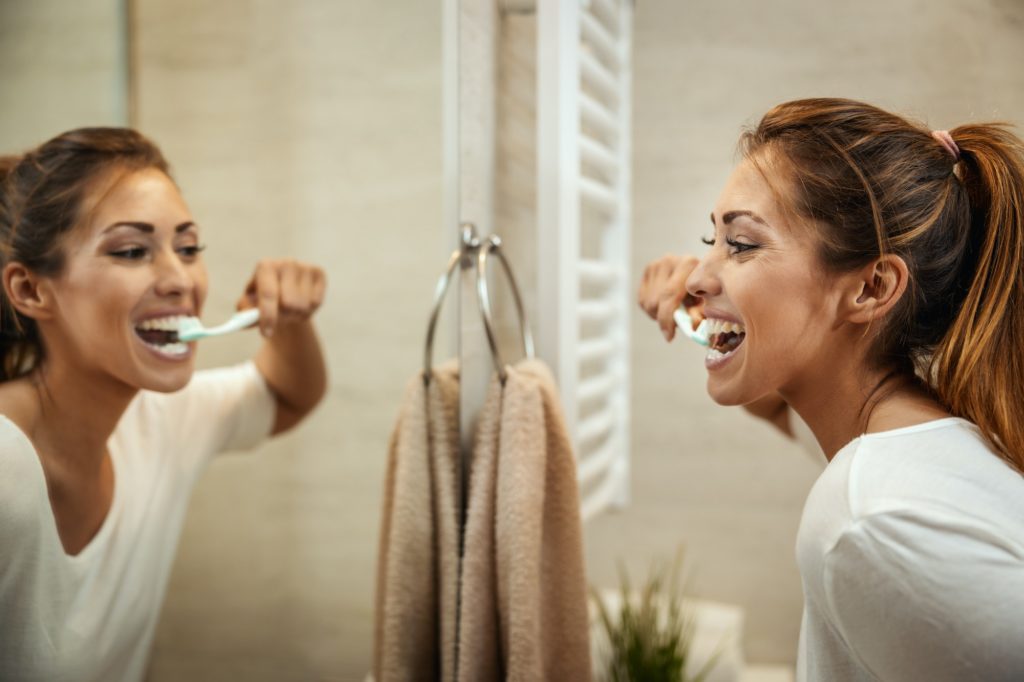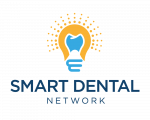How to Identify and Get Rid of Plaque on Teeth

Learn how to identify, prevent, and remove plaque from your teeth and why it’s so important to make sure you practice proper dental hygiene to avoid future problems due to plaque buildup.
Table of Contents
Plaque is something that everyone has on their teeth. It is important to try and remove the plaque on your teeth as plaque buildup can lead to cavities, tooth loss, and gingivitis. Make sure to keep up with visits to the dentist so they can remove any plaque and help protect your teeth.
What is Plaque on Teeth?
Plaque is a sticky film that bacteria sticks to. It’s that sticky, slippery, or fuzzy coating you feel on your teeth when you first wake up in the morning. The bacteria that stick produce acid, which harms your teeth and will cause tooth decay.
What Does Plaque Look Like on Teeth?
Plaque is pretty hard to see with the naked eye since it’s often the same color as your teeth. That’s why keeping up with your dentist appointments is important since dentists have special equipment to detect and remove. Your best bet for detecting plaque at home is by feeling your teeth with your tongue for any “fuzzy” areas and making sure to brush and floss properly.
How to Remove Plaque on Teeth?
The best way to remove plaque is by brushing and flossing regularly. An electric toothbrush may be recommended to help remove plaque. Studies also show that toothpaste with baking soda was deemed helpful.
How to Prevent Plaque Buildup on Teeth ?
Like most problems that can happen in your mouth, the best way to prevent plaque is by practicing good oral hygiene.
- Floss – flossing every day with dental floss or water floss (Waterpik) is very helpful. Dentists say to floss before you brush your teeth to remove more plaque.
- Brush twice daily – make sure to brush your teeth 2 times a day for at least 2 minutes. Use toothpaste with fluoride for the best results.
- See your dentist – getting your teeth cleaned twice a year will keep your teeth in great shape. Your dentist has tools to clear out hard-to-reach plaque that you can’t get at home.
- Reduce sugary foods – cut back on sugary foods and beverages.
- Use mouthwash – using an antiseptic mouthwash when you brush will be a great boost for preventing plaque
- Chew sugarless gum – chewing gum after eating is a great option for cleaning your teeth when you can’t brush them after a meal.
Preventing and removing plaque is of great importance to your overall oral hygiene. Having inconsistent oral hygiene practices could lead to more cavities or even gum disease. It’s important to get your teeth cleaned so that it doesn’t build up and form tartar. Simply brushing, flossing, and using mouthwash can help save you from plaque, causing your teeth to decay, and save you from smelly breath. Practicing those few things should help limit plaque and keep your smile a clean and healthy one.
Plaque FAQs
Plaque formation begins with accumulating bacteria, food particles, and saliva in the oral cavity. These substances combine to form a sticky, colorless film. Over time, if not removed through proper oral hygiene practices such as brushing and flossing, plaque mineralizes and hardens into a yellowish substance known as tartar or dental calculus. This calcified plaque provides a rough surface for more bacteria to adhere to, exacerbating the problem.
The bacteria present in plaque produce acids that attack tooth enamel, leading to dental decay and cavities. Additionally, gum disease can be brought on by gum inflammation brought on by the bacteria in plaque. Regular and effective oral hygiene, including professional dental cleanings, is essential for preventing buildup and maintaining oral health.
Dental plaque does not typically produce noticeable symptoms, as it is a sticky film that forms on teeth and is not easily visible. However, if not removed correctly and allowed to accumulate, it can lead to various oral health issues. Symptoms associated with advanced buildup include:
- Persistent bad breath (halitosis).
- Visible yellowish or brownish deposits on teeth (tartar).
- Tooth discoloration.
- Tooth sensitivity.
- An increased risk of cavities and gum disease.
In the case of gum disease, additional symptoms may include swollen and tender gums, bleeding gums during brushing or flossing, receding gumline, loose teeth, and changes in the bite or fit of dentures. Regular dental check-ups and good oral hygiene practices are crucial in promptly detecting and addressing plaque-related issues.
Plaque on teeth is primarily caused by the accumulation of bacteria in the oral cavity. When we consume food and beverages, bacteria in the mouth break down the sugars and carbohydrates, releasing acids as byproducts. These acids, bacteria, saliva, and food particles combine to form a sticky film.
Plaque tends to accumulate in areas difficult to reach during regular brushing, such as the gum line, between teeth, and chewing surfaces. Poor oral hygiene practices, including inadequate brushing and flossing, contribute to plaque formation. Factors like a high-sugar diet, dry mouth, smoking, certain medications, and genetic predisposition can increase the risk of buildup. Without proper removal, plaque can harden into tartar, leading to dental decay, gum disease, and other oral health problems.
The treatment of dental plaque involves a multi-faceted approach. The primary focus is on prevention through good oral hygiene practices. Regular brushing with a fluoride toothpaste at least twice daily and flossing daily help remove it from the teeth and gum line. Professional dental cleanings, typically recommended every six months, are essential to remove any hardened tartar that cannot be eliminated through regular home care.
Dentists may also recommend antimicrobial mouth rinses to reduce bacterial growth. In cases where plaque has led to gum disease, more extensive treatment may be required, such as scaling and root planing to remove plaque and tartar below the gum line. Maintaining consistent oral hygiene habits and seeking professional dental care is vital in managing and preventing dental plaque-related issues.
